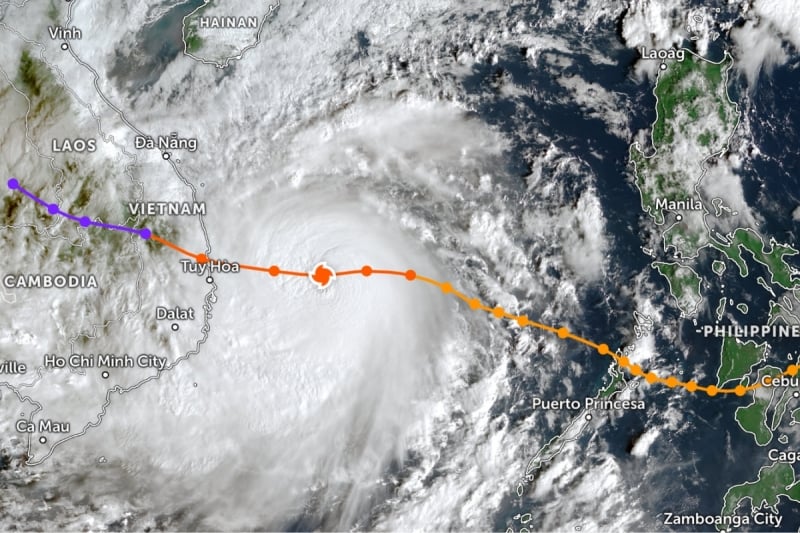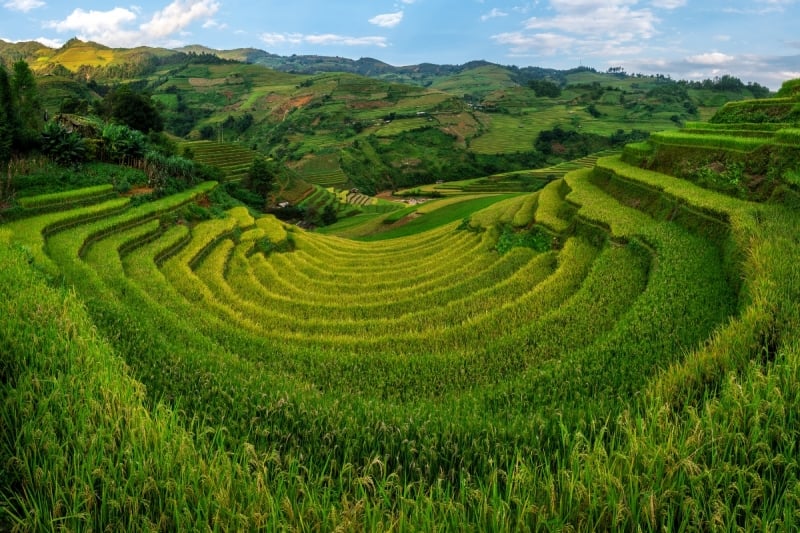Nature has once again reminded us of its power. On 6 November 2025, Typhoon Kalmaegi made landfall in central Vietnam, bringing fierce winds, torrential rain, and widespread damage. Just days after the same storm left a devastating trail across the Philippines.
If you’re travelling around the region this week, here’s what you need to know about the storm’s impact and how it could affect your plans.
Also read: Thailand’s Popular Hong Thai Herbal Inhaler Recalled Over Contamination Warning
Destructive winds sweep through Vietnam

Image credit: tropicalpixsingapore via Canva Pro
As Typhoon Kalmaegi moved inland late Thursday, it uprooted trees, damaged homes, and triggered massive power outages across central Vietnam. At least five people have died, and thousands more are facing the aftermath as authorities continue to assess the damage.
In total, the country’s disaster management agency reported damage to around 2,800 homes and power cuts affecting 1.3 million people. In coastal areas, streets were covered in debris, from shattered glass to fallen branches. Locals had to gather around generators to charge their phones and stay connected.
Rain continues to pour over central provinces like Thanh Hoa, Hue, and Quang Tri, with up to 200mm of rainfall expected in some areas. Officials have also issued warnings about possible flooding and landslides, especially near rivers and mountainous terrain.
Typhoon aftermath in the Philippines

Image credit: zoom.earth Official Website
Before hitting Vietnam, Typhoon Kalmaegi had already caused catastrophic damage in the Philippines, where authorities have confirmed at least 188 deaths, with 135 still missing and almost 100 injured.
President Ferdinand Marcos Jr. is visiting the hardest-hit areas to oversee recovery efforts, as communities continue to dig through flood-damaged towns and collapsed homes.
The Philippine civil aviation regulator has also placed all airport operations under heightened alert, especially with another system, Typhoon Fung-wong, forecast to intensify into a super typhoon and possibly hit the northern Philippines around 9 or 10 November.
Travel disruptions: what travellers should expect

Image credit: guvendemir via Canva Pro
If you’re in Vietnam or the Philippines, expect travel disruptions in the coming days.
In Vietnam, domestic flights to and from Da Nang, Hue, and Quy Nhon were grounded during the storm, and some services remain delayed as airports work to restore operations. Railway infrastructure in Quang Ngai province was also damaged, leading to partial suspensions and slower travel times.
Power cuts and flooding have also affected hotels, local transport, and attractions, particularly in coastal areas. Travellers are advised to check with airlines, train operators, or local authorities before moving between cities.
Meanwhile, ferry services in parts of the Philippines remain suspended, and several regional airports are operating on limited schedules. Those planning to visit the northern provinces next week should monitor official updates closely as Typhoon Fung-wong approaches.
Why the region is so vulnerable
Typhoon Kalmaegi marks the 13th typhoon to form in the South China Sea in 2025, underscoring just how exposed Vietnam and the Philippines are to extreme weather. Both countries sit along the Pacific typhoon belt, where storms are most frequent between June and November.
Despite the annual risks, local communities continue to show incredible resilience, rebuilding homes, restoring livelihoods, and welcoming travellers back once conditions stabilise.
Travelling safely after the storm

Image credit: NanoStockk via Canva Pro
Also read: 6 of The Most Beautiful Places to Visit in Vietnam
If you have upcoming travel plans, patience and flexibility are key. Always check travel advisories, monitor local news, and stay updated through airline alerts. It’s also best to avoid non-essential travel to affected areas until infrastructure and essential services have been restored.
While it may take a little time for tourism to bounce back, Vietnam’s spirit is strong. Once the skies clear, travellers will once again be able to experience its natural beauty, from lush rice terraces to sun-kissed beaches.




